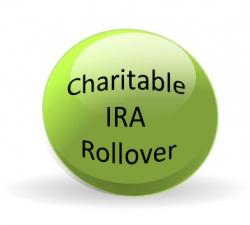Income Tax
Tax Break for Rollovers From IRAs to Charity Made Permanent
Retirees can once again transfer funds from a retirement account to charity with zero tax consequences. And the new law makes this tax break permanent, so you can now incorporate this strategy into your clients’ long-term plans.
Jan. 12, 2016

[The new “extenders law” enacted late in 2015 retains several key tax provisions and makes them permanent with certain modifications. This is the fifth part of a series of articles on these tax breaks.]
Due to the Protecting Americans from Tax Hikes (PATH) Act enacted at the end of last year, retirees can once again transfer funds from a retirement account to charity with zero tax consequences. And the new law makes this tax break permanent, so you can now incorporate this strategy into your clients’ long-term plans.
Under a special tax code provision, a taxpayer age 70½ or older can elect to transfer funds directly from an IRA to a qualified charitable organization. This so-called “charitable rollover” is limited to $100,000 per individual year ($200,000 for a married couple). Although you don’t qualify for a tax deduction for your generosity, you aren’t taxed on the distribution like you would normally be, either. It’s a virtual tax “wash.”
But there could be other side benefits to the deal. For example, other tax law provisions might limit a client’s charitable deduction. Also, this technique may effectively reduce the tax owed on Social Security benefits while lowing your adjusted gross income (AGI) for other tax purposes.
It is important for the distribution to go directly from the IRA trustee to the charitable organization. Therefore, you can’t use the funds briefly and then transfer the cash to the charity. You can never touch the money.
In addition, the contribution must otherwise qualify as a tax-deductible charitable donation. For instance, if the deduction would be would have been disallowed due to inadequate substantiation or it would be reduced because you are receiving a taxable benefit in return, the tax exclusion doesn’t apply to any part of the IRA distribution.
The charitable rollover technically expired at the end of 2014 along with dozens of others tax provisions. But now the PATH Act has restored the tax break, retroactive to January 1, 2015, and preserves it permanently going forward.
Note, however, that this maneuver won’t absolve clients of making “required minimum distributions” (RMDs) from their IRAs. After you turn age 70½, you must take annual RMDS from your traditional IRAs annually based on your life expectancy and the balance in your accounts at the end of the previous year. The charitable rollover won’t get you off the hook for an RMD.
The PATH Act includes several other permanent tax breaks relating to charity, including enhanced deductions for gifts for conservation purposes, an allowance for contributions for agriculture reasons and a special tax break for corporate donations of food inventory. Notify your clients about these changes.
